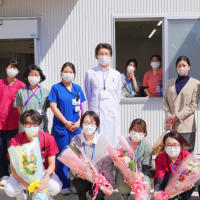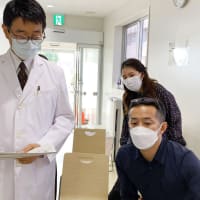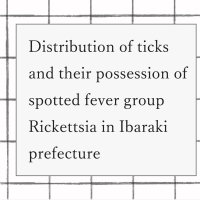
Mycoplasma genitalium Incidence, Organism Load, and Treatment Failure in a Cohort of Young Australian Women
Jennifer Walker,et al
Clinical Infectious Diseases 2013;56(8):1094–1100
Mycoplasma genitaliumは新興性行為感染症で男性に尿道炎を引き起こすとされている。女性では一致していないが尿道炎、PID等を引き起こすとされている。
Prevalenceについては小規模のpopulation studyで行われており、オーストラリアで2.4%、米国で0.8%、デンマークで2.3%、英国で3.3%との報告がある。同じ英国の研究では0.9%と低いが、Kenyan sex workersでは22.7%であったとの報告がある。
Chlamydia Incidence and Re-infection Rates Studyの一環として行われた。
16-25歳のオーストライアの女性が29のプライマリケアクリニックからリクルートされ12か月間フォロー(May 2007 and August 2008)
対象者;Women aged 16–25 years who were not pregnant at the time of recruitment,
had ever had vaginal sex with a male, were competent in written English
診断;検査;baseline, 6 months, and 12 months
MG amplified by polymerase chain reaction (PCR) targeting a 517-bp region of the 16S ribosomal RNA (rRNA) gene
The MG quantification of each sample was performed using a quantitative polymerase chain reaction (qPCR; TaqMan MGB Probe) assay targeting the MgPa gene
結果;参加者;A total of 1110 women participated in the study with a response
rate of 66%. A total of 735 women (66%) were recruited from general practice clinics and 375 (34%) were recruited from sexual health and family planning clinics. Overall, 877 participants (79%) provided a specimen at the study end, providing
1056.34 person-years of follow-up.
陽性者;A total of 27 women tested positive for MG at baseline (prevalence: 2.4%
[95% CI, 1.5–3.3]) and all women with baseline infection received treatment.
発生率;MG incidence rate was 1.3 per 100 person-years (n = 14; 95% confidence interval [CI], .8–2.3);
リスクファクター:women reporting 3 or more sex partners in the last 12 months had an increased rate of incident infection (rate ratio [RR], 5.1; 95% CI, 1.3–19.6]). There were 3 cases of MG reinfection (0.8 per 100 person-years [95% CI,.1–.9]. Organism load was higher for prevalent than incident infection (P = .04).
その他;There were 3 cases of treatment failure (9.4% [95% CI, 2.0–25.0]); organism load was higher in cases with treatment failure than in successfully treated cases (P < .01). An MG 23S rRNA mutation was detected in 5 cases (3 cases of treatment failure and 2 successfully treated).
臨床症状;3名無症状、その他;11名;viginal discharge (n = 3), vaginal odor (n = 2), burning on urination (n = 2), intermenstrual spotting (n = 5), abdominal pain (n = 2), or dyspareunia (n = 1).
Jennifer Walker,et al
Clinical Infectious Diseases 2013;56(8):1094–1100
Mycoplasma genitaliumは新興性行為感染症で男性に尿道炎を引き起こすとされている。女性では一致していないが尿道炎、PID等を引き起こすとされている。
Prevalenceについては小規模のpopulation studyで行われており、オーストラリアで2.4%、米国で0.8%、デンマークで2.3%、英国で3.3%との報告がある。同じ英国の研究では0.9%と低いが、Kenyan sex workersでは22.7%であったとの報告がある。
Chlamydia Incidence and Re-infection Rates Studyの一環として行われた。
16-25歳のオーストライアの女性が29のプライマリケアクリニックからリクルートされ12か月間フォロー(May 2007 and August 2008)
対象者;Women aged 16–25 years who were not pregnant at the time of recruitment,
had ever had vaginal sex with a male, were competent in written English
診断;検査;baseline, 6 months, and 12 months
MG amplified by polymerase chain reaction (PCR) targeting a 517-bp region of the 16S ribosomal RNA (rRNA) gene
The MG quantification of each sample was performed using a quantitative polymerase chain reaction (qPCR; TaqMan MGB Probe) assay targeting the MgPa gene
結果;参加者;A total of 1110 women participated in the study with a response
rate of 66%. A total of 735 women (66%) were recruited from general practice clinics and 375 (34%) were recruited from sexual health and family planning clinics. Overall, 877 participants (79%) provided a specimen at the study end, providing
1056.34 person-years of follow-up.
陽性者;A total of 27 women tested positive for MG at baseline (prevalence: 2.4%
[95% CI, 1.5–3.3]) and all women with baseline infection received treatment.
発生率;MG incidence rate was 1.3 per 100 person-years (n = 14; 95% confidence interval [CI], .8–2.3);
リスクファクター:women reporting 3 or more sex partners in the last 12 months had an increased rate of incident infection (rate ratio [RR], 5.1; 95% CI, 1.3–19.6]). There were 3 cases of MG reinfection (0.8 per 100 person-years [95% CI,.1–.9]. Organism load was higher for prevalent than incident infection (P = .04).
その他;There were 3 cases of treatment failure (9.4% [95% CI, 2.0–25.0]); organism load was higher in cases with treatment failure than in successfully treated cases (P < .01). An MG 23S rRNA mutation was detected in 5 cases (3 cases of treatment failure and 2 successfully treated).
臨床症状;3名無症状、その他;11名;viginal discharge (n = 3), vaginal odor (n = 2), burning on urination (n = 2), intermenstrual spotting (n = 5), abdominal pain (n = 2), or dyspareunia (n = 1).

























